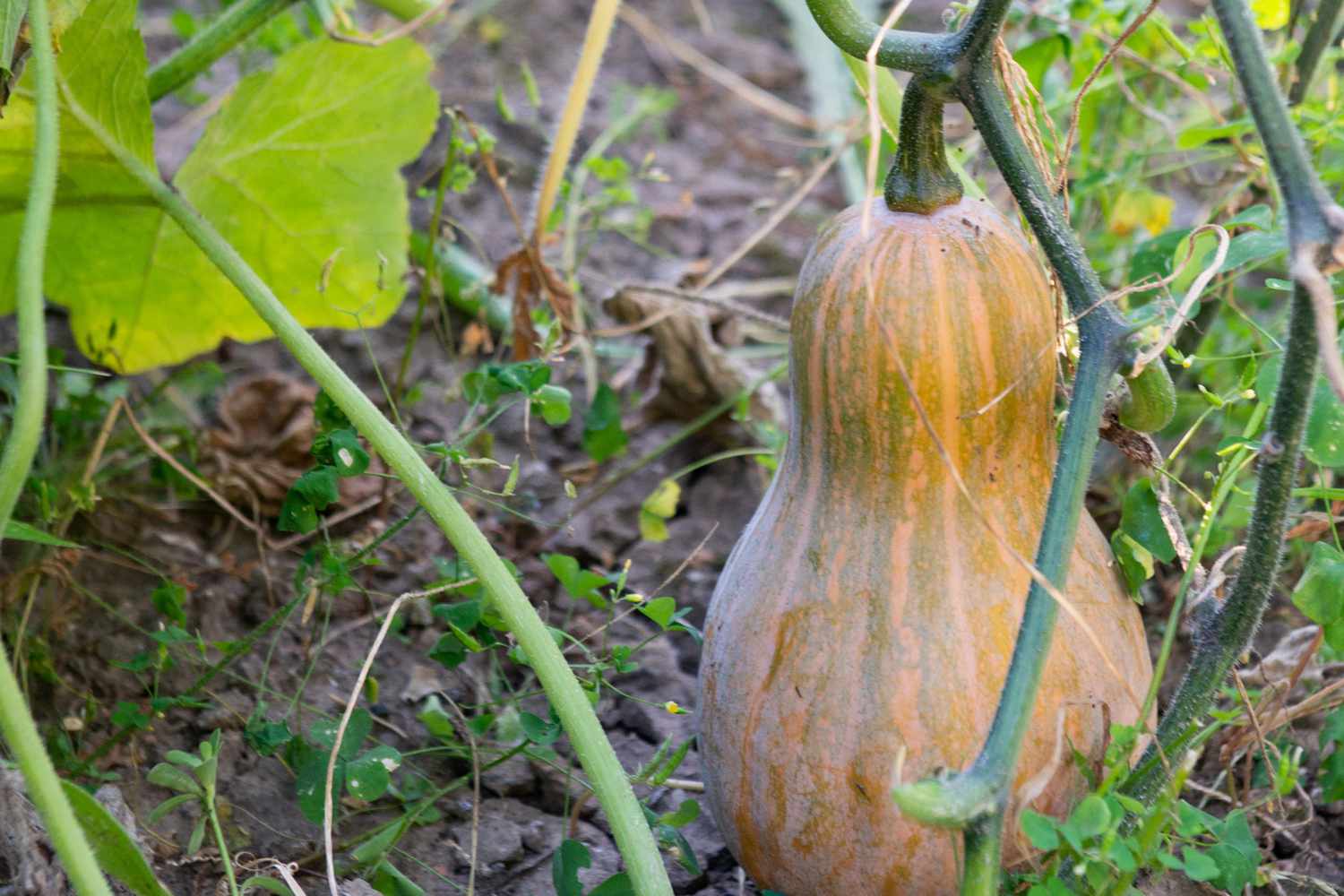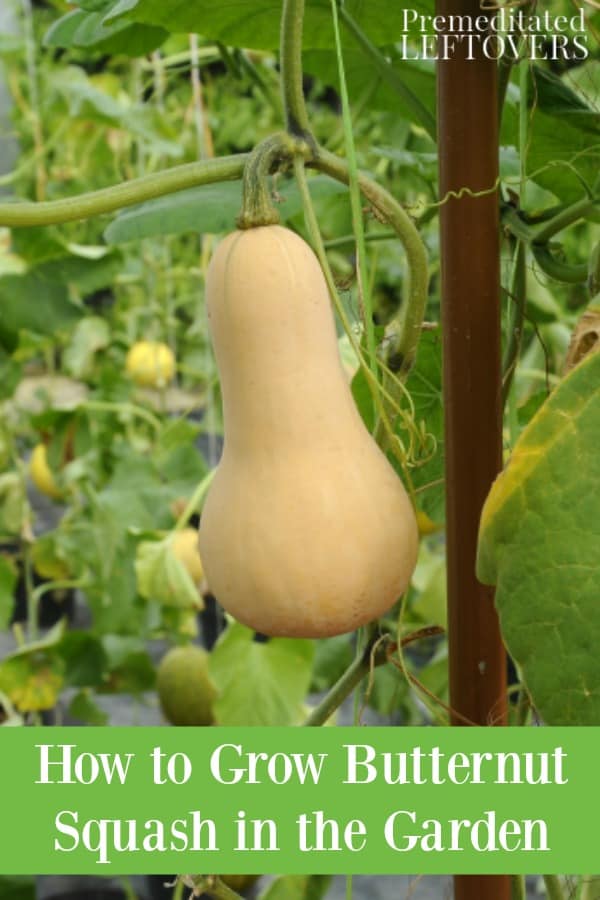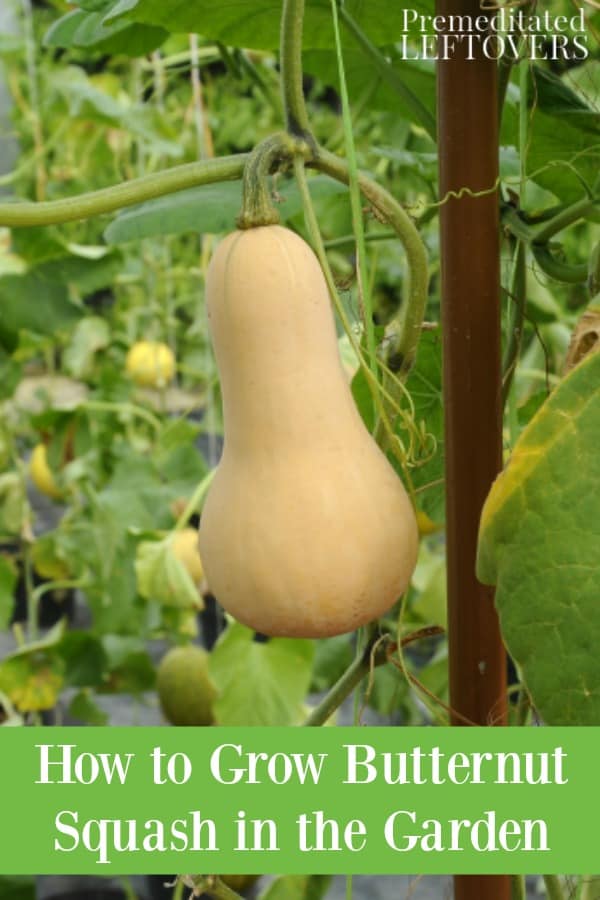Are you curious about how long it takes to grow butternut squash? Well, you’re in luck because we have all the information you need. Whether you’re a seasoned gardener or a beginner with a green thumb, understanding the timeline for growing butternut squash can help you plan and anticipate a bountiful harvest. From planting the seeds to harvesting the fully matured squash, find out how long this delicious vegetable takes to thrive in your garden.

Factors Affecting the Duration of Butternut Squash Growth
Growing butternut squash can be a rewarding experience, but it is essential to understand the various factors that can affect the duration of its growth. From climate and temperature to soil conditions and seed quality, each element plays a significant role in determining how long it takes for your butternut squash to reach maturity. In this article, we will explore these factors in detail, providing valuable insights and tips to help you optimize your butternut squash growth.
Climate and Temperature
The climate and temperature of your growing region have a direct impact on the productivity and growth rate of butternut squash. It is important to note that butternut squash thrives in warm climates, with an optimal temperature range of 70 to 85°F (21 to 29°C). However, extremely high temperatures can hinder pollination and fruit set. Understanding the climate and temperature patterns of your region can help you select the appropriate variety and plan your planting schedule accordingly.
Optimal Temperature Range
Butternut squash performs best when the temperature ranges between 70 and 85°F (21 and 29°C). Within this range, the plant can grow vigorously and achieve optimal fruit production. However, bear in mind that temperatures consistently above 90°F (32°C) can negatively impact fruit set and quality. Monitoring the temperature and providing shade during heatwaves can help mitigate these effects.
Frost Sensitivity
On the other end of the temperature spectrum, butternut squash is highly sensitive to frost. Exposure to frost can damage the plant and its fruit. To protect your butternut squash from frost, it is crucial to plant them after the danger of frost has passed and ensure they are properly covered or sheltered during cold spells.

Soil Conditions
The soil conditions in which you cultivate your butternut squash can significantly influence its growth and overall health. Factors such as soil type, pH, drainage, and nutrient availability play vital roles in the plant’s development. Understanding these aspects and making necessary amendments can contribute to the optimal growth of your butternut squash.
Soil Type
Butternut squash prefers well-drained soils rich in organic matter. Sandy loam or loamy soils are ideal for promoting healthy root development and preventing waterlogging. Avoid heavy clay or compacted soils as they can impede root growth and lead to poor plant performance.
Soil pH
Maintaining the right soil pH is crucial for ensuring nutrient availability and uptake by your butternut squash plants. The ideal pH range for growing butternut squash is slightly acidic to neutral, between 6.0 and 7.0. Regular soil testing can help you monitor and adjust the pH levels as needed, ensuring an optimal growing environment.
Drainage
Good soil drainage is essential for the root health and development of butternut squash plants. Excessive water retention can promote root rot and hinder growth. Ensure proper drainage by amending the soil with organic matter, such as compost, and avoid overwatering.
Nutrient Availability
Providing adequate nutrients to your butternut squash plants is crucial for their growth and fruit production. Soil amendments, such as compost or well-balanced fertilizers, can help improve nutrient availability. Incorporating organic matter into the soil before planting can also enrich it with essential nutrients.
Sunlight Exposure
Sunlight exposure is another critical factor that influences the growth and productivity of butternut squash plants. These plants require sufficient sunlight to produce the energy needed for healthy growth, flower formation, and fruit development. Understanding their sunlight requirements and monitoring shading conditions can maximize your butternut squash yield.
Sun Requirements
Butternut squash thrives in full sun conditions. Ideally, the plants should receive a minimum of six to eight hours of direct sunlight daily. Adequate sunlight exposure promotes photosynthesis and ensures proper fruit development. Plant your butternut squash in a location that allows for ample sunlight throughout the day.
Shade Tolerance
While butternut squash prefers full sun conditions, they do have some shade tolerance. Partial shade during the hottest hours of the day can help protect the plants from scorching and reduce water stress. However, prolonged shade can lead to reduced growth and lower productivity. Be mindful of any structures or trees that may cast shade on your butternut squash plants and adjust their position if necessary.

Seed Quality
The quality of butternut squash seeds can significantly impact their germination rate and subsequent growth. High-quality seeds have better viability and are more likely to result in healthy and productive plants. When selecting butternut squash seeds, consider factors such as seed viability and germination rates to optimize your chances of success.
Seed Viability
Seed viability refers to the ability of the seeds to germinate and produce viable plants. Fresh butternut squash seeds typically have high viability rates. When purchasing or saving seeds, ensure they are from a reliable source and have been stored properly to maintain their viability.
Seed Germination
Butternut squash seeds require specific conditions to germinate successfully. They prefer warm soil temperatures between 70 and 95°F (21 and 35°C). Depending on the soil temperature and environmental conditions, the germination process can take anywhere from 5 to 10 days. Proper seed selection and the right germination conditions are crucial for a successful start to your butternut squash growth.
Planting Method
The method in which you plant your butternut squash can affect their growth rate and overall success. There are two primary methods: direct sowing and transplanting. Each approach has its advantages, and selecting the right one for your situation can optimize your growing experience.
Direct Sowing
Direct sowing involves planting butternut squash seeds directly into the garden bed or container where they will grow. This method is suitable for regions with long growing seasons and a reliable warm climate. Direct sowing eliminates the need to disturb the plants during transplanting, providing a seamless transition from seed to mature plants.
Transplanting
Transplanting involves starting the butternut squash seeds indoors or in a controlled environment and later transplanting the seedlings into the garden. This method allows for an earlier start in regions with shorter growing seasons or areas prone to cool weather. Transplanting also provides an opportunity to give the plants a head start and enhance their overall growth potential.

Fertilization
Providing the right nutrients to your butternut squash plants is essential for their healthy growth and fruitful harvest. Balancing soil fertility through proper fertilization practices can optimize their nutrient uptake and overall productivity.
Soil Testing and Amendments
Before applying any fertilizers, it is advisable to conduct a soil test to determine the current nutrient levels and the specific requirements of your soil. Soil amendments such as compost, well-rotted manure, or organic fertilizers can help replenish the nutrients in the soil. Use the results of the soil test to guide your fertilizer application, ensuring you provide the necessary nutrients while avoiding excessive use.
Organic vs. Synthetic Fertilizers
Both organic and synthetic fertilizers can be used to meet the nutrient needs of your butternut squash plants. Organic fertilizers, such as compost or well-rotted manure, provide slow-release nutrients and improve soil structure. Synthetic fertilizers, on the other hand, provide readily available nutrients and allow for more precise control over nutrient ratios. Choosing the right fertilizer option depends on your personal preferences and the specific needs of your plants.
Watering
Proper watering is crucial for the growth and development of butternut squash plants. Consistent and adequate moisture levels ensure optimal plant health and fruit production. Knowing when and how to water your butternut squash can help you avoid issues such as water stress or root rot.
Watering Frequency
Butternut squash plants require regular watering, especially during hot and dry periods. On average, they need about 1-1.5 inches of water per week. However, the watering frequency may vary depending on factors such as temperature, soil type, and rainfall patterns. Monitor the moisture levels in the soil and adjust your watering schedule accordingly.
Watering Techniques
When watering your butternut squash plants, it is important to apply water directly to the base of the plants and avoid overhead watering. Drip irrigation or soaker hoses can help deliver water efficiently while minimizing the risk of foliage diseases. Additionally, watering in the morning allows the foliage to dry quickly, reducing the likelihood of fungal diseases.

Pest and Disease Control
Protecting your butternut squash plants from pests and diseases is crucial for their healthy growth and fruit production. Being aware of common pests and diseases, along with implementing preventive measures, can help you mitigate potential risks and maximize your harvest.
Common Pests
Several pests can pose a threat to butternut squash plants, including squash bugs, cucumber beetles, and vine borers. Regular monitoring of your plants and early detection of pest infestations can help you take timely action. Natural pest control methods such as handpicking, row covers, and beneficial insect release can be effective in managing pest populations.
Common Diseases
Butternut squash plants are susceptible to various diseases, including powdery mildew, downy mildew, and bacterial wilt. Ensure proper air circulation around your plants by providing adequate spacing and removing any infected foliage promptly. Fungicides labeled for specific diseases can also be used as a preventive measure, but always follow the instructions carefully.
Preventive Measures
Implementing preventive measures is key to minimizing the impact of pests and diseases on your butternut squash. Practicing crop rotation each year, removing plant debris, and maintaining a weed-free environment can help disrupt the life cycles of pests and reduce the likelihood of disease transmission. Additionally, selecting disease-resistant varieties can provide an added layer of protection.
Pruning and Training
Pruning and training your butternut squash plants can help improve their overall growth habits, maximize fruit production, and facilitate better airflow. While pruning is not necessary, it can be beneficial in specific situations.
Pruning involves selectively removing lateral vines or excess foliage to control plant size and redirect energy towards fruit production. It also helps reduce shading and improve air circulation, decreasing the risk of diseases. Pruning is often done to manage sprawling vine growth in limited garden spaces or to promote vertical growth on trellises or supports.
Training your butternut squash plants onto trellises or vertical supports can help save space, keep the fruits off the ground, enhance air circulation, and facilitate easier harvesting. Proper training involves gently securing the main stem or vines to the support structure using soft ties or twine.
Harvesting Time
Knowing when to harvest your butternut squash is crucial for enjoying the best flavor and texture. Harvesting too early or too late can result in suboptimal taste and storage quality. Understanding the maturation period and recognizing the signs of ripeness will ensure you pick your butternut squash at the perfect time.
Maturation Period
Butternut squash typically takes between 75 to 100 days from seed planting to maturity. The exact maturation period can vary depending on the variety and growing conditions. Be sure to check the seed packet or consult local gardening resources for specific information about your chosen variety.
Signs of Ripeness
When it comes to determining the ripeness of butternut squash, there are a few key indicators to look out for. The skin of a ripe butternut squash should be hard and tough, with a deep tan or beige color. The stem should be dry and corky, indicating that the fruit has detached from the plant. Additionally, the squash should feel heavy for its size and emit a hollow sound when tapped.
In conclusion, the duration of butternut squash growth is influenced by several factors, including climate and temperature, soil conditions, sunlight exposure, seed quality, planting method, fertilization, watering, pest and disease control, pruning and training, and harvesting time. By understanding and optimizing these factors, you can ensure successful and bountiful butternut squash growth in your garden. Happy gardening!



